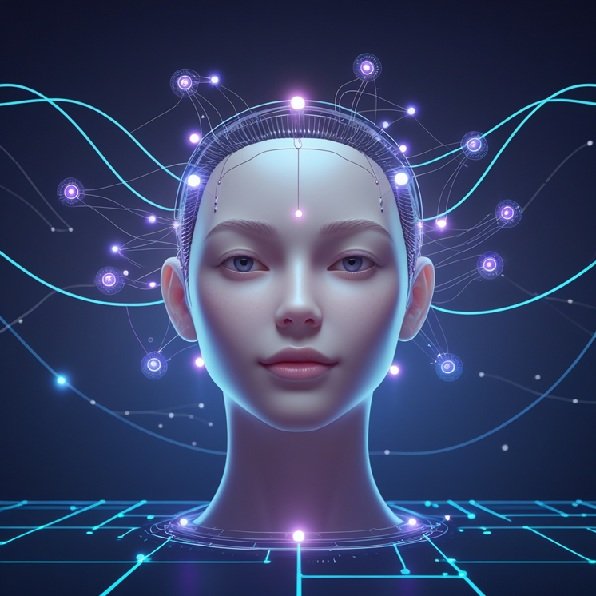Artificial Intelligence (AI) has been a major factor in our lives online and facial analysis is one of its most revolutionary. Its AI Face Analyzer–a technology that utilizes computer vision and deep learning to analyze human faces — has gone from being a sci-fi saga to a fundamental component of the modern world and applications that range from unlocking smartphones to advanced detection of emotions for customer support.
This article explains the ways AI face analyzers function and what their main features are application in real-world situations and ethical issues among the best tools used in the field and what’s in the pipeline for the future.
Table of Contents
-
What is an AI Face Analyzer?
-
How AI Facial Analysis Works
-
Top Features of AI Face Analyzer Tools
-
Real-World Use Cases
-
Benefits of AI Face Analysis
-
Limitations and Ethical Considerations
-
Best AI Face Analyzer Tools (Comparison Table)
-
Industry Trends and Future Outlook
-
FAQs
-
Final Thoughts
1. What is an AI Face Analyzer?
An AI Face Analyzer is a software or system that uses artificial intelligence–particularly computer vision and machine learning–to extract and analyze information from human faces. The information could include identification verification as well as age estimation, emotion detection and even micro-expression analysis.
These tools are commonly employed in fields like healthcare, security law enforcement, marketing, and entertainment. They mix deep neural networks (DNNs), convolutional neural networks (CNNs), and huge databases to analyze facial images in real-time or from saved videos or images.
2. How AI Facial Analysis Works
The procedure of facial analysis using AI typically involves a number of key actions:
a. Face Detection
Prior to anything else the system will detect the presence of faces in a picture or video stream. This is usually done with CNNs or algorithms such as Viola-Jones.
b. Landmark Detection
After the face has been detected it is then identified by the system as key facial features like the nose, eyes mouth, jawline, and the nose. This aids to align the facial features to allow for further analysis.
c. Feature Extraction
The AI extracts facial features that are present on the face for example:
-
Distance between eyes
-
The cheekbones are shaped in a concave shape.
-
Nose shape
-
Eye openness
-
Skin texture
d. Data Comparison & Classification
The features extracted are then compared with trained datasets. To recognize facial features, the system could look at an existing database of faces. To detect emotion it categorizes the face into categories of emotion (happy sad, angry and so on. ).
e. Output Generation
On the basis of analysis, the software produces outputs that include:
-
Emotion detected: Happy, Neutral, Sad, etc.
-
Estimation of gender and age
-
Identification verification or match
-
Asymmetry in the face or health information
3. Top Features of AI Face Analyzer Tools
| Feature | Description |
|---|---|
| Face Detection | Identifies and locates human faces in photos or videos. |
| Facial Recognition | Reconciles a face to stored identities or confirms the identity of a person |
| Emotion Detection | The system detects emotions such as emotions like sadness, joy and fear, among others. |
| Age & Gender Estimation | Determines the age range and gender of an individual |
| Liveness Detection | It determines if a face appears real or spoofed (e.g. using an image or mask) |
| Facial Landmark Tracking | Determines key points such as lips, eyes, nose jawline, eyes |
| 3D Facial Mapping | Three-dimensional representation of the face to be used in advanced applications. |
| Expression Analysis | Analyzes subtle facial expressions and micro-expressions. signals |
| Ethnicity Estimation | The attempt to predict an ethnic origin (controversial and delicate) |
| Real-Time Analysis | Processes faces in real time for live video or feeds for surveillance. |
4. Real-World Use Cases
1. Security & Surveillance
-
Face recognition at airports as well as border crossings
-
Control of access in secure buildings
-
Real-time surveillance to assist law enforcement
2. Smartphones & Personal Devices
-
Face unlock features
-
Content delivery that is personalized based on the user’s emotions
3. Healthcare
-
Assessment of mental health through analysis of emotional expression
-
The monitoring of distress and pain levels
4. Retail & Customer Experience
-
The analysis of shopper’s emotional responses to improve store layout
-
Customizing marketing strategies based upon real-time feedback from facial expressions
5. Entertainment & Social Media
-
Filters as well as AR effects that react to facial movements.
-
Virtual avatars which resemble facial expressions
6. Education
-
The assessment of student engagement by the analysis of facial expressions in online courses
5. Benefits of AI Face Analysis
| Benefit | Explanation |
|---|---|
| Enhanced Security | Biometric security is much harder to fake than ID cards or passwords |
| Personalization | Apps and services are able to tailor experiences based on feelings or personal characteristics |
| Contactless Authentication | It is useful in post-pandemic environments in a world with a high level of hygiene |
| Improved Healthcare | Non-invasive insight into physical and emotional well-being |
| Real-Time Feedback | Instantly revealing information for therapists, educators, or retail employees |
6. Limitations and Ethical Considerations
1. Privacy Concerns
-
Face scanning without authorization in public areas
-
Storage of data and the misuse of biometric information
2. Bias in AI Models
-
Some data sets do not represent minorities and can result in bias based on gender or race.
-
Accuracy discrepancies are based on lighting conditions
3. Consent & Regulation
-
There is no clear consent framework for the collection of facial information
-
Different laws across the globe (e.g. GDPR in Europe as opposed to. there is no law of the federal level in U.S.)
4. Misuse by Authoritarian Regimes
-
Surveillance of the suppression of political activity
-
The use of predictive policing in raising ethical alarms
7. Best AI Face Analyzer Tools (Comparison Table)
| Tool Name | Key Features | Use Case Area | Free Version | Notable Users |
|---|---|---|---|---|
| Face++ | Face recognition, emotion age and gender | Security, Retail | Limited API | Alibaba, Lenovo |
| Microsoft Azure Face API | Recognition of identity emotional detection | Enterprise, Healthcare | Yes (limited) | Uber, Walgreens |
| Amazon Rekognition | Analysis, facial detection, recognition of celebrity | Surveillance, Social Media | Yes (free level) | Pinterest, NASA |
| Trueface | Spoof detection Face recognition, facial detection | Law Enforcement | No | U.S. Air Force |
| FaceIO | Face authentication using a browser | Web Applications | Yes | Startups, Devs |
| Luxand FaceSDK | Emotion, age, gender detection | App Development | Trial | Samsung, LG |
| Kairos | Face recognition analysis of emotion | Research, Retail | Yes | Stanford, ScentBird |

8. Industry Trends and Future Outlook
a. Decentralized Facial Data Storage
Blockchain-based decentralized systems that utilize blockchain for face data can help limit the misuse of central authorities.
b. On-Device AI Processing
To ensure privacy, many applications are shifting AI face analysis from the cloud to local devices.
c. Emotion-Aware Applications
From mood-tracking wearables, to advertising that is driven by emotion, AI is a growing industry.
d. Ethical AI Development
A growing emphasis on transparency fair, impartial and non-biased face recognition technologies.
e. Regulation Catching Up
Governments are starting to develop facial recognition laws. Expect new global frameworks to be in place soon.
9. Frequently Asked Questions (FAQs)
Q1. Does AI facial analysis reliable?
Modern AI tools are capable of achieving more than 99% accuracy when operating in controlled settings. However, accuracy is dependent on lighting, ethnicity and the quality of input.
Q2. Can AI face analyzers detect emotions reliably?
They can identify primal emotions like anger or happiness with a reasonable accuracy, but they be unable to distinguish between complex or mixed emotions.
Q3. Is facial data secure?
It’s all dependent on the service. Always verify if they are in compliance with GDPR and similar laws on data protection.
Q4. Can AI replace human facial judgment?
Not entirely. AI can improve efficiency and provide insights, but it isn’t able to provide context and understanding.
Q5. Are there any free AI face analyzers?
Yes, applications like FaceIO as well as Microsoft’s Face API offer limited free options for researchers and developers.
10. Final Thoughts
It’s the AI Face Analyzer is more than a fancy technology. It’s an innovative tool that is changing the way we interact with technology to assess human emotions as well as ensure security and even provide medical treatment. But as effective as it may be however, it requires an ethically solid foundation to ensure that it is not misused and biased.
From improving personalized experiences to safeguarding public areas, facial analysis using AI is a huge opportunity. However, its use must be open, transparent, and democratic, and fair.
Looking ahead in the future, we can expect AI facial analyzers to get more efficient quicker, faster, and integrated into everyday life, whether through the camera on your smartphone, a dashboard in your car, or your smartwatch.
Read Also: Durable AI


